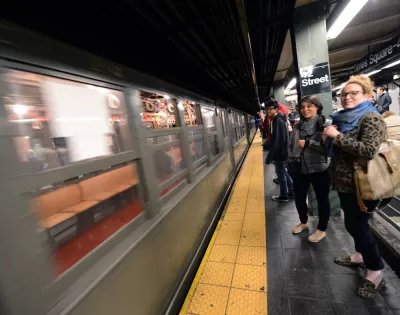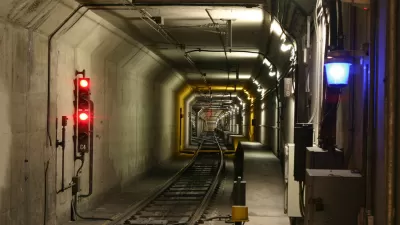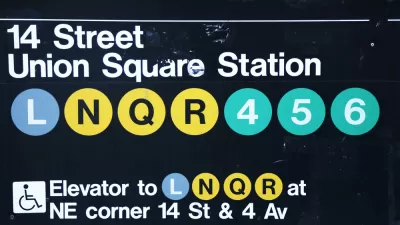An investigative report digs into the causes of delays on the New York subway and finds that the official company line might not square with reality.

Aaron Gordon releases a bombshell investigative report on delays on the New York subway, and the great lengths it seems the New York MTA has gone to cover up or avoid the real causes of the issue.
Gordon begins by explaining the MTA's long abused scapegoat for system delays: "a catchall category blandly titled 'insufficient capacity, excess dwell, unknown,' which captures every delay without an obvious cause. According to Gordon that category "is where the other primary MTA narrative developed, that of 'overcrowding': Historically high ridership has resulted in crowds that are keeping trains in stations longer."
But Gordon has found ample evidence to doubt overcrowding as the persistent reason for subway delays in New York, including, but not limited to, the fact that "overcrowding" delays have continued to increase even as ridership has decreased.
As for what is causing the delays, Gordon says the MTA had the real culprit under its nose in a report produced in 2014 but never released to the public. According to the article, the MTA slowed all the trains down after a train collision in 1995. According to Gordon, "the MTA, quite literally, slowed all the trains down, issuing a bulletin informing employees in April 1996 that their propulsion systems would be modified so they could achieve a maximum speed of 40 miles per hour, down from the previous high of 50 to 55 miles per hour on a flat grade."
There were other speed limits built into the system, including modified signals that would trip the speed of trains if they were traveling over a certain speed, requiring a restart process of duration anywhere from one to ten minutes long. An unpublished 2014 study, reported for the first time here by Gordon, "found 2,851 lost total passenger hours per weekday could be attributed to thirteen modified signals alone."
The article should be considered a long read, so there's a lot more detail, evidence, and commentary provided.
FULL STORY: ‘The Trains Are Slower Because They Slowed the Trains Down’

Alabama: Trump Terminates Settlements for Black Communities Harmed By Raw Sewage
Trump deemed the landmark civil rights agreement “illegal DEI and environmental justice policy.”

Planetizen Federal Action Tracker
A weekly monitor of how Trump’s orders and actions are impacting planners and planning in America.

Why Should We Subsidize Public Transportation?
Many public transit agencies face financial stress due to rising costs, declining fare revenue, and declining subsidies. Transit advocates must provide a strong business case for increasing public transit funding.

Understanding Road Diets
An explainer from Momentum highlights the advantages of reducing vehicle lanes in favor of more bike, transit, and pedestrian infrastructure.

New California Law Regulates Warehouse Pollution
A new law tightens building and emissions regulations for large distribution warehouses to mitigate air pollution and traffic in surrounding communities.

Phoenix Announces Opening Date for Light Rail Extension
The South Central extension will connect South Phoenix to downtown and other major hubs starting on June 7.
Urban Design for Planners 1: Software Tools
This six-course series explores essential urban design concepts using open source software and equips planners with the tools they need to participate fully in the urban design process.
Planning for Universal Design
Learn the tools for implementing Universal Design in planning regulations.
Caltrans
Smith Gee Studio
Institute for Housing and Urban Development Studies (IHS)
City of Grandview
Harvard GSD Executive Education
Toledo-Lucas County Plan Commissions
Salt Lake City
NYU Wagner Graduate School of Public Service





























